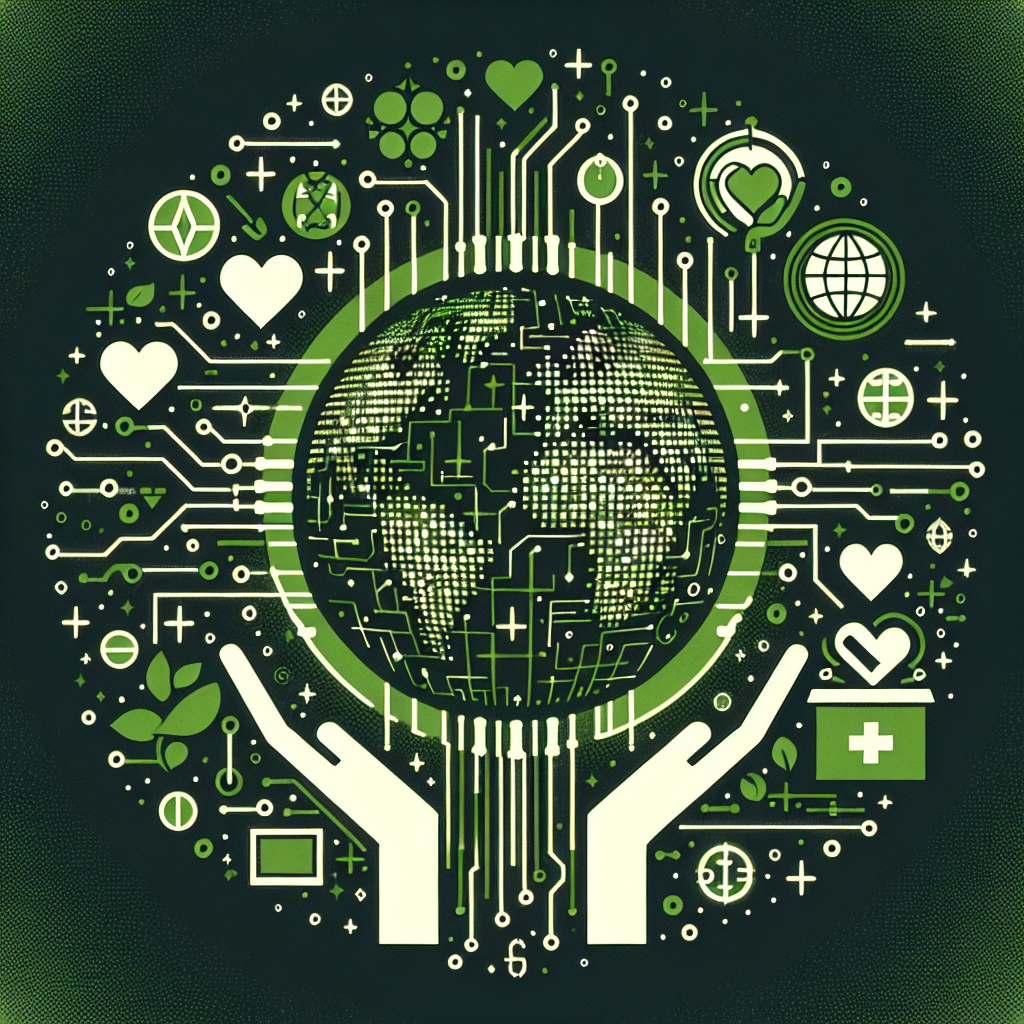Artificial Intelligence (AI) has the potential to revolutionize philanthropy and create a positive impact on society. By leveraging AI technology, philanthropic organizations can enhance their efficiency, effectiveness, and reach in addressing social issues and driving positive change. From optimizing donations and resources to predicting trends and outcomes, AI can empower philanthropy to achieve greater impact and make a difference in the world.
AI technology has already been utilized in various philanthropic initiatives, from fundraising campaigns to data analysis and decision-making processes. One of the key benefits of AI in philanthropy is its ability to automate repetitive tasks, allowing organizations to focus on strategic planning and innovative solutions. AI can also help philanthropic organizations better understand their target audience, optimize communication strategies, and personalize donor engagement to increase donations and support.
Furthermore, AI can enhance the effectiveness of grantmaking processes by analyzing data, identifying trends, and predicting outcomes. By leveraging AI algorithms and machine learning models, philanthropic organizations can make data-driven decisions, allocate resources more efficiently, and measure the impact of their initiatives more accurately. This not only improves the transparency and accountability of philanthropic efforts but also maximizes the social good achieved through charitable contributions.
In addition, AI can help philanthropic organizations identify new opportunities for collaboration, innovation, and partnerships. By analyzing large datasets and identifying patterns and correlations, AI can uncover insights and trends that may not be apparent through traditional methods. This can lead to new strategies, approaches, and solutions to address complex social issues and create sustainable impact in communities around the world.
AI can also play a crucial role in disaster response and humanitarian aid efforts. By analyzing real-time data, monitoring social media feeds, and predicting trends, AI can help organizations respond quickly and effectively to emergencies, allocate resources efficiently, and coordinate relief efforts in a more targeted and timely manner. This can save lives, reduce suffering, and provide critical support to those in need during times of crisis.
Moreover, AI can empower individual donors and volunteers to make a greater impact through philanthropy. By leveraging AI-powered platforms and tools, individuals can discover new opportunities for giving, connect with like-minded donors and organizations, and track the impact of their donations in real-time. This can inspire more people to get involved in philanthropy, increase transparency and accountability in the sector, and drive positive change in communities worldwide.
Despite the numerous benefits of AI in philanthropy, there are also challenges and ethical considerations that need to be addressed. One of the key concerns is the potential for bias and discrimination in AI algorithms, which can perpetuate inequality and exacerbate social issues. It is essential for philanthropic organizations to ensure that AI technologies are developed and implemented ethically, with a focus on fairness, transparency, and inclusivity.
Another challenge is the potential for AI to replace human workers in the philanthropic sector, leading to job displacement and economic uncertainty. It is crucial for organizations to strike a balance between leveraging AI technology to enhance their impact and ensuring that human workers are not marginalized or left behind in the process. Investing in training and upskilling programs for employees, as well as promoting a culture of innovation and collaboration, can help organizations navigate the challenges posed by AI in philanthropy.
In conclusion, AI has the potential to transform philanthropy and create new possibilities for social good. By leveraging AI technology, philanthropic organizations can enhance their efficiency, effectiveness, and impact in addressing social issues and driving positive change. From optimizing donations and resources to predicting trends and outcomes, AI can empower philanthropy to achieve greater impact and make a difference in the world. By addressing the challenges and ethical considerations associated with AI in philanthropy, organizations can harness the power of technology to create a more equitable, inclusive, and sustainable future for all.
FAQs:
Q: How can AI help philanthropic organizations enhance their fundraising efforts?
A: AI can help philanthropic organizations optimize their fundraising campaigns by analyzing data, identifying trends, and personalizing donor engagement. By leveraging AI algorithms and machine learning models, organizations can target the right audience, optimize communication strategies, and increase donations and support.
Q: What are the potential benefits of AI in grantmaking processes?
A: AI can enhance the effectiveness of grantmaking processes by analyzing data, predicting outcomes, and allocating resources more efficiently. By leveraging AI technology, philanthropic organizations can make data-driven decisions, measure impact more accurately, and maximize the social good achieved through charitable contributions.
Q: How can AI empower individual donors and volunteers to make a greater impact through philanthropy?
A: AI-powered platforms and tools can help individuals discover new opportunities for giving, connect with like-minded donors and organizations, and track the impact of their donations in real-time. This can inspire more people to get involved in philanthropy, increase transparency and accountability, and drive positive change in communities worldwide.
Q: What are some of the challenges and ethical considerations associated with AI in philanthropy?
A: One of the key concerns is the potential for bias and discrimination in AI algorithms, which can perpetuate inequality and exacerbate social issues. It is essential for philanthropic organizations to ensure that AI technologies are developed and implemented ethically, with a focus on fairness, transparency, and inclusivity. Another challenge is the potential for AI to replace human workers in the philanthropic sector, leading to job displacement and economic uncertainty. It is crucial for organizations to strike a balance between leveraging AI technology to enhance their impact and ensuring that human workers are not marginalized or left behind in the process.

